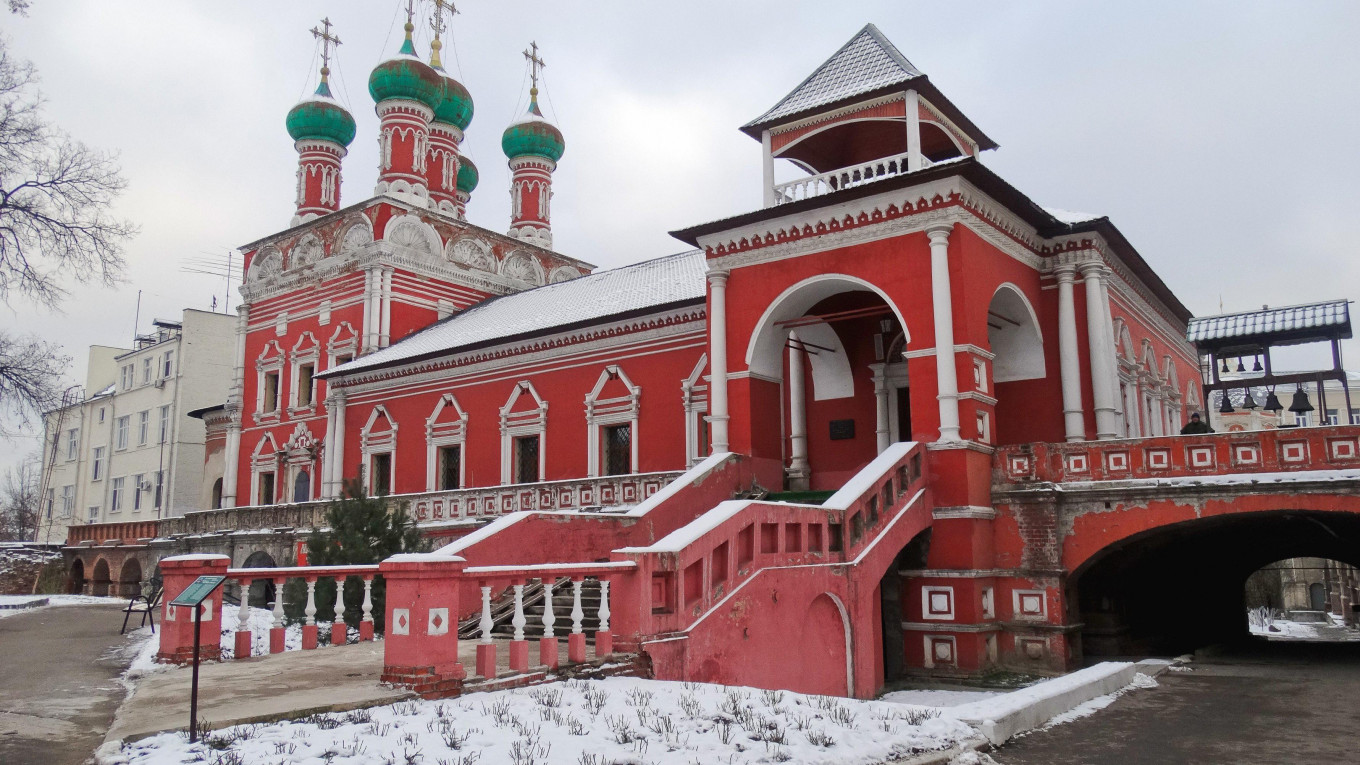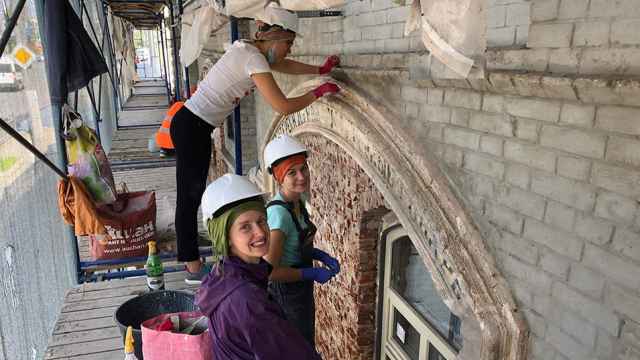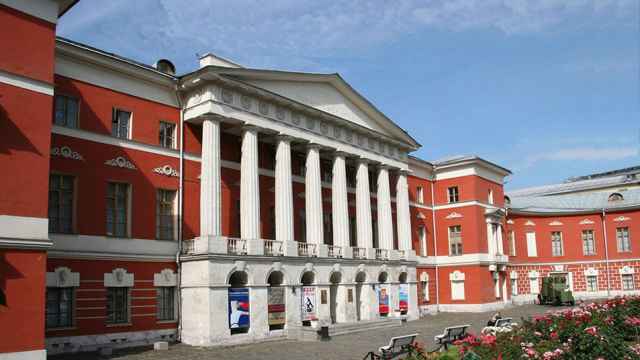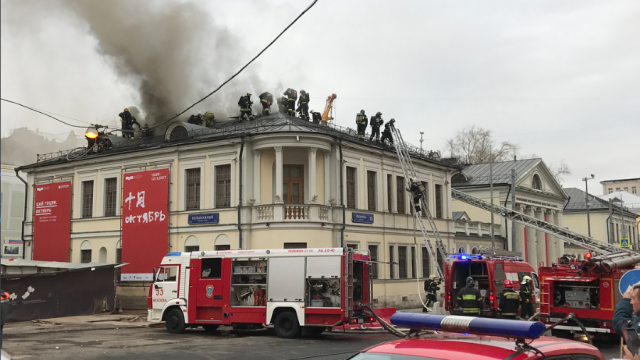The twin gates of the Vysoko-Petrovsky Monastery beckon visitors into an oasis away from central Moscow’s noisy streets. Inside the tall brick walls, children roughhouse in piles of snow, tourists snap photos, elderly beg- gars talk about their difficulties with heads held high. The Trapeznaya bakery yields heavenly smells of cinnamon rolls and pirogi.
For the monastery, it’s a remarkable scene. After being shuttered for years under the Soviets, Vysoko-Petrovsky has returned to life. It became an active monastery again in 2009. Soon after, the Russian federal budget began to fund renovations in the compound’s churches and Patriarch Kirill started returning its famous icons. The monastery now has 12 monks, 20 workers and seven churches.
But the most important development is human: A group of young men is taking a page out of the Protestant activism playbook to build a grassroots community around the monastery. Children and young adults now come here to learn more about the Orthodox faith.
He is a treasure trove of information about the history of the monastery. Its story starts in 1315, Krinitsyn says, when Metropolitan Peter ended a struggle between the principalities of Moscow and Tver by establishing the Holy See in Moscow. From that moment, the Orthodox Patriarchy remained closely connected with the Russian Tsars as they cemented control of the Eastern Slavic world.
Like their imperial predecessors, the Soviets used the Vysoko-Petrovsky Monastery for its symbolic value. But their approach was rather different, installing factories inside each of the magnificent churches. They built a kindergarten over graves to aristocrats and Orthodox saints. As if that wasn’t enough, engineers building the Moscow metro dumped piles of dirt inside the monastery walls. Krinitsyn estimates two to four meters of dirt lie above the original ground level.
The monastery was closed soon after the Soviet government took power. Over time, Vysoko-Petrovsky’s 200-strong community disintegrated, and nine of the monks were shot. They are now consecrated saints.
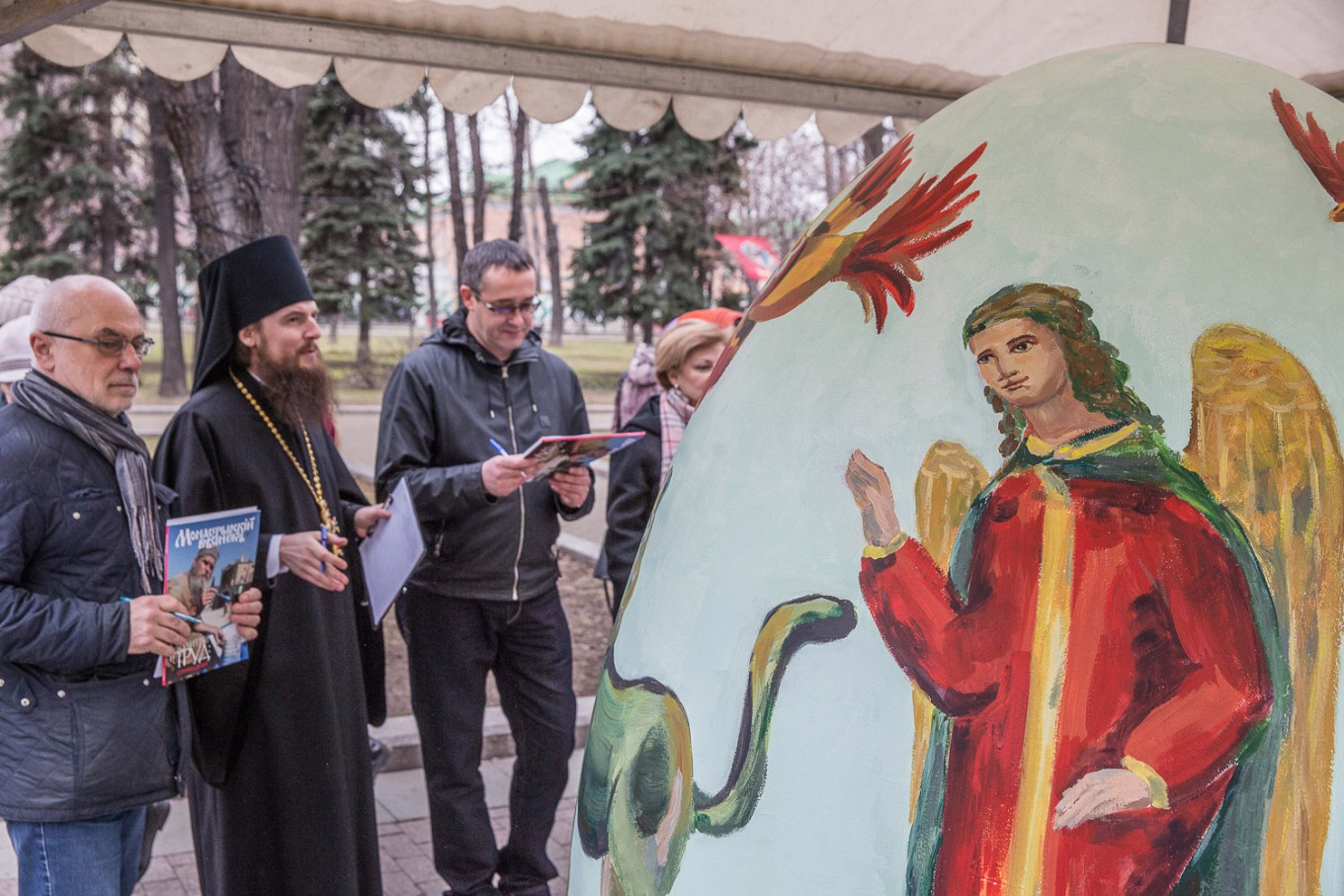
Soon after the break up of the Soviet Union, the State Duma made a ruling to return all confiscated buildings to the church. By the end of the 1990s, the factories had vacated, though the kindergarten remains to this day.
In restoring the monastery, religious leaders have prioritized its future over past history. Krinitsyn organizes tours for new visitors, including adventure tours for children. Another deacon organizes a women’s service group that visits the sick in hospitals every week.
The monastery has a new theological school, offering free two-year courses (there are now 40 participants.) Children also attend a Sunday school at the monastery, where, like their Western counterparts, they learn the basics of religion through arts, crafts and music.
Georgy Tarasov, a viola student at the Moscow Conservatory, leads Vysoko-Petrovsky’s youth group. After one year, it has gathered about 200 members. Like Protestant youth groups, they organize excursions and musical nights, and invite famous people to talk about their spiritual journeys. Another conservatory student runs a youth choir.
“Young people feel the need for some kind of spirituality,” Tarasov told The Moscow Times, “Everything has become free and open, and young people have become interested them- selves, independent of who their parents are.”
The younger clergy are also getting their hands dirty. Twenty-three-year-old Inok Makarii, who only received Holy Orders from Patriarch Kirill on April 12, 2017, maintains the monastery’s website, takes official photo- graphs, and uploads them to social media.
Evangelism is certainly an unusual step for the monastery. Located in the capital of Russian Orthodoxy, it was never in need of patrons or parishioners. But the new Vysoko-Petrovsky finds itself in a different place, and is commit- ted to rebuilding its former community along with its historic churches.
“Our future is our connection with the past,” Krinitsyn says, before changing his billowing robes for a black leather jacket and jeans, and heading out through the iron gates.
A Message from The Moscow Times:
Dear readers,
We are facing unprecedented challenges. Russia's Prosecutor General's Office has designated The Moscow Times as an "undesirable" organization, criminalizing our work and putting our staff at risk of prosecution. This follows our earlier unjust labeling as a "foreign agent."
These actions are direct attempts to silence independent journalism in Russia. The authorities claim our work "discredits the decisions of the Russian leadership." We see things differently: we strive to provide accurate, unbiased reporting on Russia.
We, the journalists of The Moscow Times, refuse to be silenced. But to continue our work, we need your help.
Your support, no matter how small, makes a world of difference. If you can, please support us monthly starting from just $2. It's quick to set up, and every contribution makes a significant impact.
By supporting The Moscow Times, you're defending open, independent journalism in the face of repression. Thank you for standing with us.
Remind me later.


